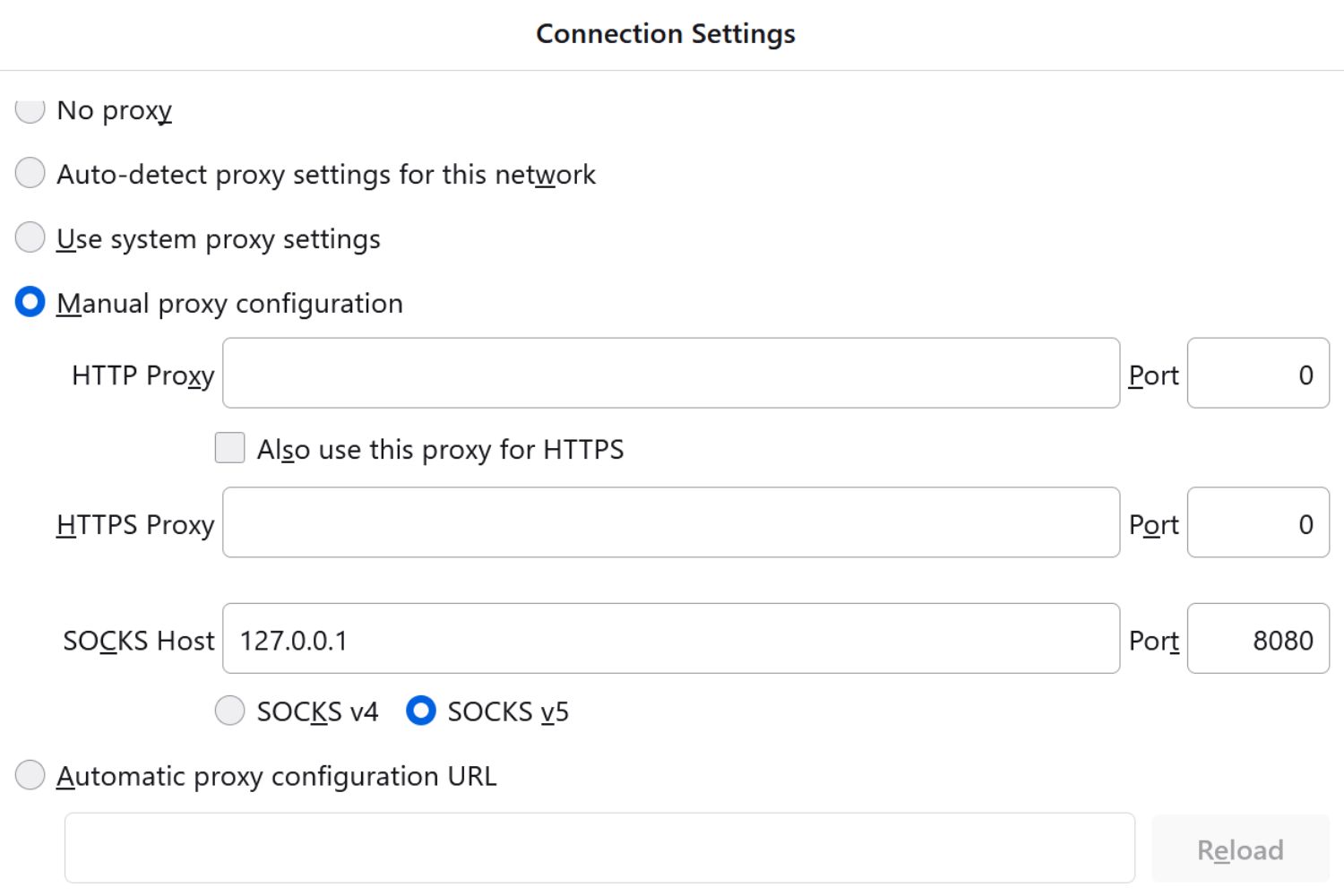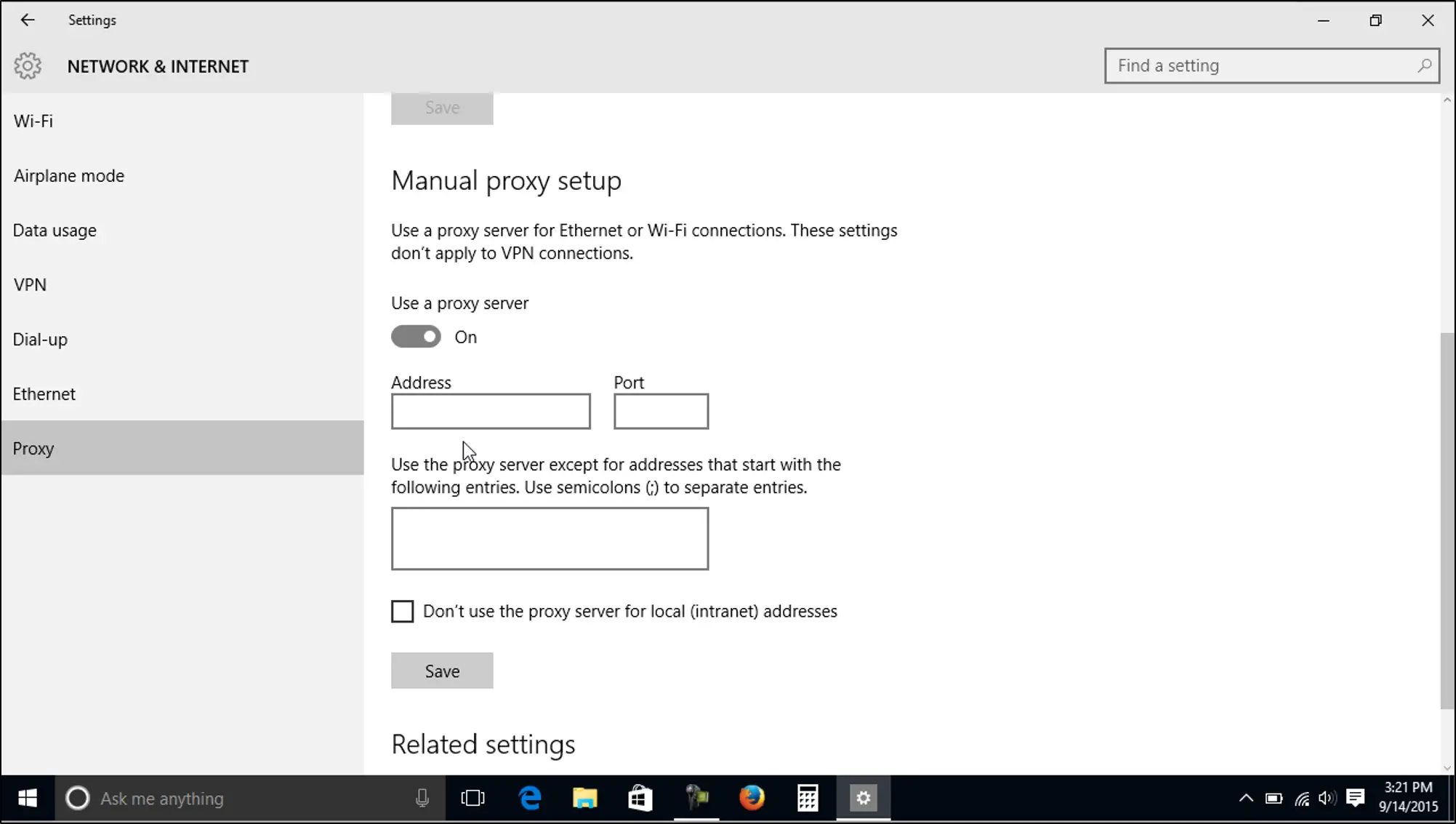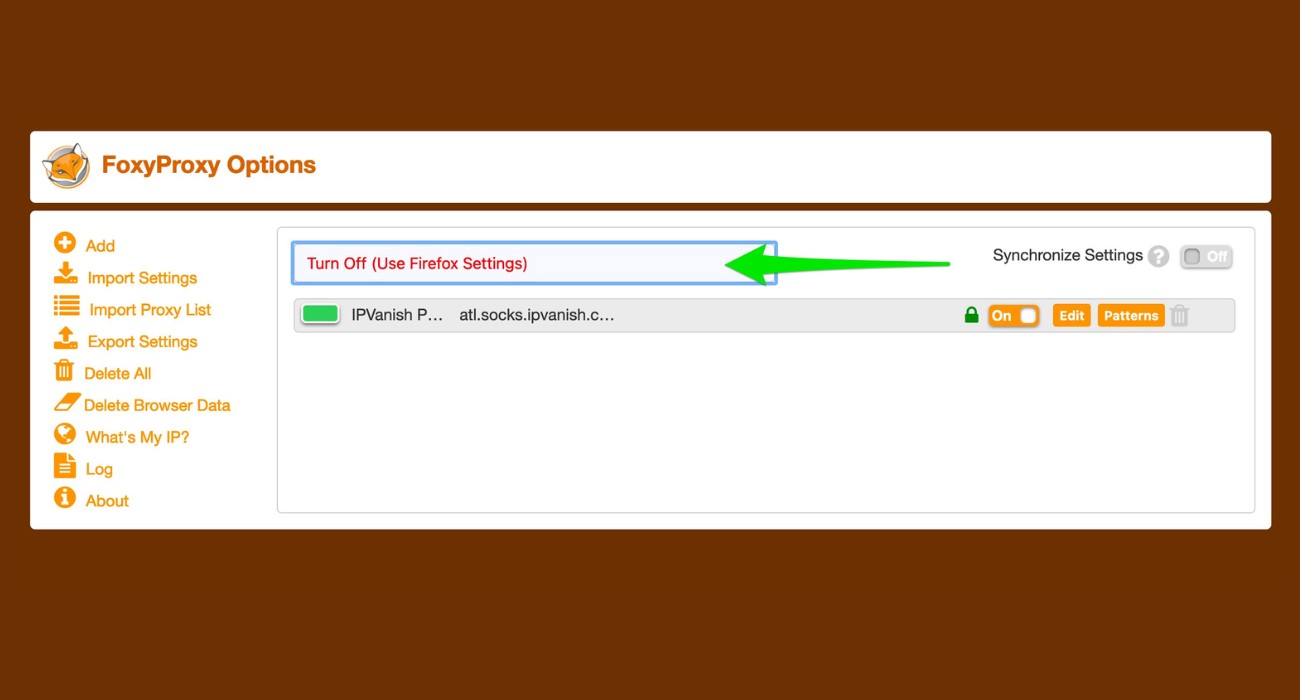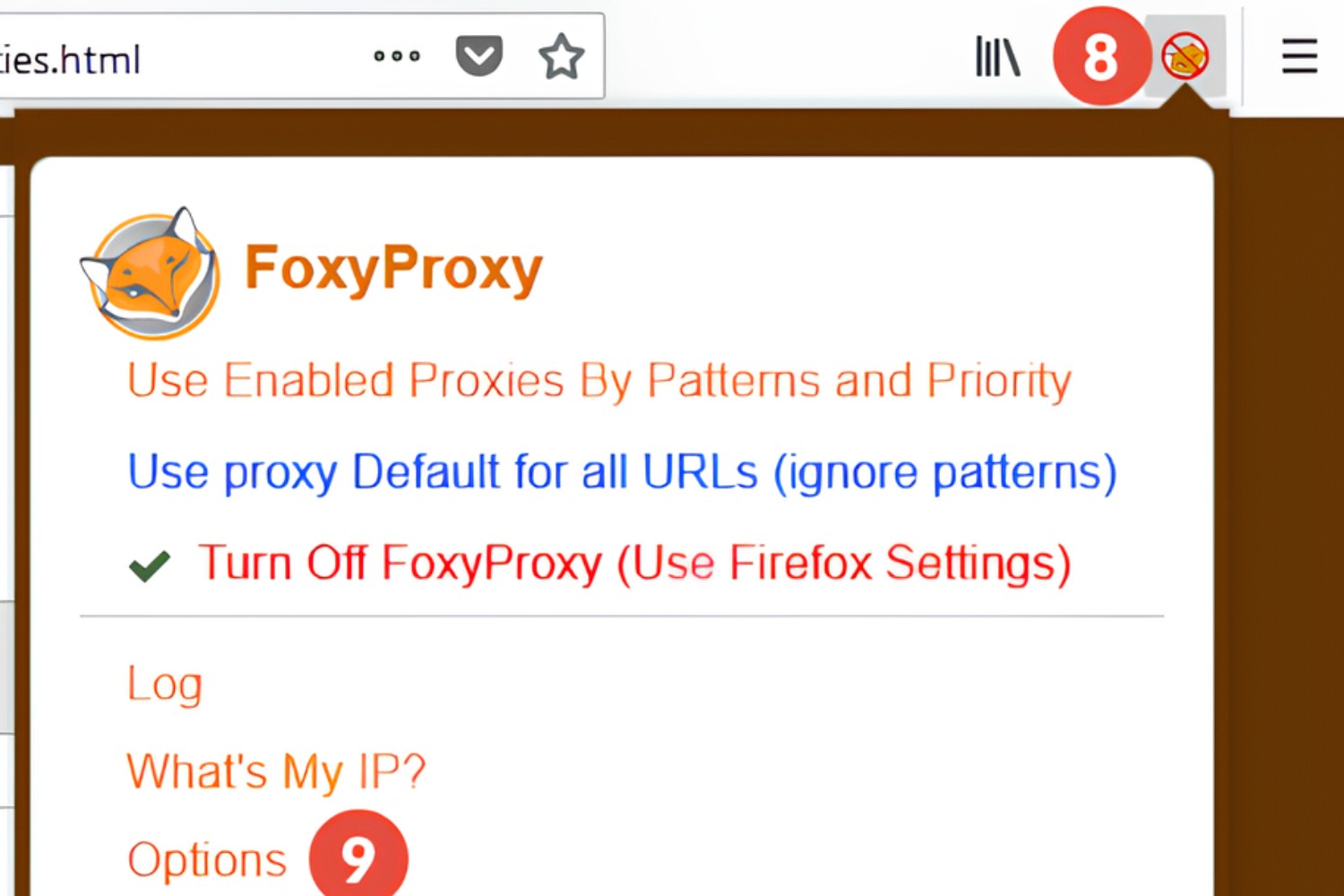Introduction
Are you looking to enhance your online security and privacy while browsing the web? Or perhaps you want to gain access to geo-restricted content or bypass internet censorship? If so, a Socks5 proxy server might be just what you need.
In today’s digital age, the need for online security and privacy has become paramount. Whether you are accessing sensitive information or simply wanting to maintain your anonymity online, using a Socks5 proxy server can help protect your data and ensure your online activities remain private.
But what exactly is a Socks5 proxy server, and why should you consider using one? In this article, we will explore the ins and outs of Socks5 proxy servers, and guide you through the process of setting one up.
A Socks5 proxy server is a versatile tool that acts as an intermediary between your device and the internet. When you connect to the internet through a Socks5 proxy server, your traffic is routed through the server, making it appear as if you are accessing the internet from a different location. This not only helps to protect your identity and online activities but also allows you to bypass certain restrictions and access content that may be regionally blocked.
So why would you want to use a Socks5 proxy server? There are several advantages to using one:
- Enhanced Privacy: By masking your IP address and encrypting your internet traffic, a Socks5 proxy server adds an extra layer of privacy to your online activities. This helps to protect your personal information from prying eyes, such as hackers or government surveillance.
- Bypassing Restrictions: Many websites and online services impose geo-restrictions, limiting access based on your location. With a Socks5 proxy server, you can easily bypass these restrictions by connecting through a server in a different country.
- Faster Connections: Since a proxy server caches web content, it can often deliver web pages more quickly than if you were connecting directly. This can be especially advantageous when accessing bandwidth-heavy content or streaming services.
- Improved Security: Socks5 proxy servers can provide an additional layer of security by filtering out malicious websites and blocking potentially harmful content. This can help protect your devices from malware and other cybersecurity threats.
In the next sections of this article, we will guide you through the process of setting up a Socks5 proxy server. From choosing a server provider to configuring and testing the server, we will provide you with step-by-step instructions to help you get started. So let’s dive in and set up your own Socks5 proxy server!
What is a Socks5 Proxy Server?
A Socks5 proxy server is a powerful tool that allows you to route your internet traffic through an intermediary server. The term “Socks” is derived from the term “Socket Secure,” which refers to the protocol used to establish a connection between a client device and a server. The number ‘5’ represents the version of the Socks protocol.
Unlike traditional HTTP proxies, which only handle web traffic, a Socks5 proxy server can handle various types of traffic, including TCP and UDP. This makes it a versatile option for routing not only web browsing but also other internet activities, such as online gaming, file sharing, and instant messaging.
When you connect to the internet through a Socks5 proxy server, your internet traffic is first routed to the proxy server, which then acts as an intermediary between your device and the websites or services you are accessing. The proxy server masks your IP address, making it appear as if you are accessing the internet from the server’s location.
The Socks5 protocol offers several benefits over its predecessors, including improved security and authentication mechanisms. It supports different authentication methods, such as username/password or IP-based authentication, which adds an extra layer of security to your connection.
Additionally, the Socks5 protocol allows for both IPv4 and IPv6 addresses, making it compatible with the latest internet protocols. This future-proof design ensures that your Socks5 proxy server will continue to function seamlessly as the internet evolves.
One of the key advantages of a Socks5 proxy server is its ability to handle various types of traffic, including UDP traffic. Unlike HTTP proxies, which only support TCP traffic, Socks5 proxies can handle UDP-based applications, such as online gaming or VoIP services.
Furthermore, Socks5 proxy servers can be configured to provide different levels of anonymity. You can choose whether to forward your original IP address to the target server or hide it completely. This allows you to customize your level of privacy based on your needs.
Overall, a Socks5 proxy server offers a flexible and secure way to enhance your online experience. By routing your internet traffic through an intermediary server, it helps protect your identity, bypass geo-restrictions, and improve your overall security while browsing the web.
Why Use a Socks5 Proxy Server?
There are several compelling reasons to consider using a Socks5 proxy server for your internet browsing and online activities. Let’s explore some of the key advantages:
- Enhanced Privacy and Security: One of the primary benefits of using a Socks5 proxy server is the increased privacy and security it offers. By routing your internet traffic through the proxy server, your IP address is masked, making it difficult for others to track your online activities. This helps protect your personal information and adds an extra layer of security to your internet connection.
- Bypass GEO-Restrictions: Many websites and online services implement geographically-based restrictions, meaning certain content may only be accessible from specific countries. With a Socks5 proxy server, you can easily bypass these restrictions. By connecting through a server in a desired location, you can make it appear as if you are accessing the internet from that country, granting you access to region-restricted content.
- Access Blocked Websites: In some cases, certain websites or online services may be blocked by your internet service provider or government. By using a Socks5 proxy server, you can circumvent these blocks and regain access to the blocked content. The proxy server acts as a middleman, allowing you to bypass censorship and browse the web freely.
- Faster Connection Speeds: Proxy servers can improve your browsing experience by caching web content. As a result, when you access a frequently visited website, the proxy server can deliver the content more quickly since it’s already stored locally. This can result in faster load times and a smoother browsing experience, particularly when accessing bandwidth-intensive content or streaming services.
- Anonymous Torrenting and P2P Sharing: If you engage in torrenting or peer-to-peer sharing activities, using a Socks5 proxy server can add an extra layer of anonymity. By routing your torrent traffic through the proxy server, you can protect your real IP address from being exposed to other users in the network, enhancing your privacy and security.
- Network Testing and Troubleshooting: Socks5 proxy servers are also commonly used for network testing and troubleshooting purposes. They allow you to simulate network environments, test network applications, and identify potential issues without directly exposing your devices or network to external threats.
With these advantages in mind, it’s clear why using a Socks5 proxy server can greatly benefit your online activities. Whether you’re concerned about privacy, bypassing restrictions, or improving your connection speed, a Socks5 proxy server provides a flexible, secure, and efficient solution.
Step 1: Choosing a Server Provider
When setting up a Socks5 proxy server, the first step is to choose a reliable server provider. There are several factors to consider when making this decision to ensure you select a provider that meets your needs. Here are some key points to consider:
- Reliability and Uptime: Look for a server provider with a reputation for reliability and high uptime. You want a provider that offers stable server connections and minimal downtime, ensuring your proxy server is always accessible when you need it.
- Server Locations: Consider the location options provided by the server provider. The more server locations they offer, the more flexibility you have in choosing a specific region for your proxy server. This is particularly important if you want to bypass geo-restrictions or access region-specific content.
- Connection Speed: The speed of your proxy server can have a significant impact on your browsing experience. Look for a server provider that offers fast connections to ensure you can enjoy smooth and seamless internet access through your proxy server.
- Customer Support: It’s always beneficial to choose a server provider that offers prompt and reliable customer support. If you encounter any issues or have questions during the setup process or while using the proxy server, you want to have access to knowledgeable support staff who can assist you.
- Pricing and Plans: Consider the pricing and plans offered by different server providers. Compare the features and costs to find one that fits your budget and provides the necessary capabilities for your specific requirements. Some providers may offer free trial periods, allowing you to test their services before making a commitment.
- Security Measures: Look for server providers that prioritize security. Ensure they employ encryption protocols and have measures in place to protect your data and prevent unauthorized access. This is essential to maintain your privacy and keep your online activities secure.
- Reviews and Recommendations: Before making a final decision, read reviews and seek recommendations from trusted sources. Look for feedback from other users to get insights into the performance, reliability, and overall experience with different server providers.
By carefully considering these factors, you can choose a server provider that provides the necessary features, performance, and support for your Socks5 proxy server. Once you’ve selected a provider, you can proceed to the next step of setting up your proxy server.
Step 2: Setting up the Server
Once you have chosen a server provider for your Socks5 proxy server, the next step is to set up the server. Here’s a step-by-step guide to help you through the process:
- Sign up and purchase a server: Follow the instructions provided by your chosen server provider to sign up and purchase a server. Choose the server location that best suits your needs and select the appropriate server specifications based on your expected usage.
- Access the server: After purchasing the server, you will be provided with login credentials to access the server. This typically includes an IP address, username, and password. Use SSH (Secure Shell) to connect to the server using these credentials.
- Update the server: Once connected to the server, update the server’s operating system and installed packages to the latest versions. This ensures that your server has the latest security patches and bug fixes.
- Install a Socks5 proxy server software: There are several Socks5 proxy server software options available, such as Dante or ShadowSocks. Choose the software that best fits your needs and install it on the server. Follow the software’s installation instructions provided by the developers.
- Configure the Socks5 proxy server: After the software installation, configure the Socks5 proxy server according to your preferences. This includes setting the listening port, specifying the allowed addresses, and enabling authentication if desired. Refer to the software’s documentation for detailed configuration instructions.
- Start the Socks5 proxy server: Once the server is configured, start the Socks5 proxy server service. This will make the server ready to accept incoming connections and route the traffic through the proxy server.
- Test the server connection: To ensure that the Socks5 proxy server is functioning correctly, test the server connection. Use a web browser or other software that supports Socks5 proxy connections and configure it to use the server’s IP address and listening port. Access a website or service to confirm that the traffic is being routed through the proxy server.
By following these steps, you can successfully set up a Socks5 proxy server. Remember to refer to the specific documentation provided by your server provider and proxy server software for any additional instructions or configuration details. Once the server is set up, you can move on to the next step of configuring the proxy server settings.
Step 3: Configure the Proxy Server
After setting up the Socks5 proxy server, the next step is to configure its settings. This will allow you to customize the proxy server according to your needs and preferences. Here’s how you can configure the proxy server:
- Access the server configuration: Connect to your Socks5 proxy server using SSH or the method recommended by your server provider. Once connected, locate the configuration file for your chosen proxy server software.
- Specify the listening port: In the configuration file, specify the port on which the proxy server will listen for incoming connections. This is the port that your client devices will use to connect to the proxy server. Choose a secure and unused port, and ensure that it is not blocked by your server’s firewall.
- Configure allowed addresses: Determine which IP addresses or IP ranges are allowed to connect to the proxy server. You can specify individual IP addresses or use CIDR notation for ranges. This helps ensure that only authorized devices can make use of the proxy server.
- Enable authentication: To enhance security, consider enabling authentication for your Socks5 proxy server. This requires clients to provide valid credentials (such as a username and password) before being granted access to the proxy server. This prevents unauthorized access and adds an extra layer of protection.
- Set up encryption: If desired, you can set up encryption for your Socks5 proxy server to secure the communication between the client devices and the server. This can protect against eavesdropping and ensure the privacy of the data being transmitted.
- Restart the proxy server: After making any configuration changes, save the configuration file and restart the proxy server to apply the new settings. This will ensure that the changes take effect and the proxy server is ready to accept connections with the updated configuration.
It’s important to refer to the specific documentation provided by your proxy server software for detailed instructions and configuration options. Each software may have its own configuration file format and specific settings that need to be adjusted.
Once the proxy server is configured, it’s recommended to test its functionality by connecting a client device to it and accessing a website or online service. Verify that the traffic is being routed through the proxy server and that the desired IP address is being used.
By following these steps and customizing the proxy server settings, you can ensure that your Socks5 proxy server is tailored to your requirements and offers the desired level of security and functionality.
Step 4: Test the Proxy Server
Once you have set up and configured your Socks5 proxy server, it’s important to test its functionality to ensure that it is working as intended. Testing the proxy server will help you verify that the traffic is being routed through the proxy and that your desired settings are in effect.
Here are the steps to test your Socks5 proxy server:
- Configure client device: On the client device that you want to use the proxy server with, configure the proxy settings. This can typically be done in the network settings of your operating system or through proxy settings in your web browser or application.
- Enter proxy server details: Enter the IP address or hostname of the server where your Socks5 proxy is running, as well as the listening port you specified during the configuration process. If authentication is enabled, also enter the appropriate credentials.
- Access a website or service: With the proxy settings configured, try accessing a website or online service through your client device. Pay attention to any changes in your IP address or the behavior of the website. If the proxy server is functioning correctly, the website or service should be accessed through the proxy and appear as if it is being accessed from the proxy server’s location.
- Verify IP address: To confirm that your traffic is indeed passing through the proxy server, you can use online tools or websites that display your IP address. Compare the IP address shown when using the proxy server to your actual IP address. They should be different, indicating that the traffic is being routed through the proxy server.
- Test various services: Depending on your intended use of the proxy server, you may want to test various online services and applications to ensure that everything is functioning as expected. This can include accessing region-restricted content, checking the speed and performance of downloads, or testing applications that require Socks5 proxy support.
By thoroughly testing your Socks5 proxy server, you can confirm that it is set up correctly and functioning as intended. If you encounter any issues during the testing process, refer back to the configuration settings and consult the documentation or support resources provided by your chosen proxy server software or server provider.
Remember to test your proxy server periodically to ensure its continued functionality and to make any necessary adjustments or updates as needed. Regular testing will help you maintain the security, privacy, and performance benefits offered by your Socks5 proxy server.
Conclusion
Setting up and using a Socks5 proxy server can greatly enhance your online experience by providing increased privacy, security, and flexibility. Whether you want to protect your personal information, bypass geo-restrictions, or improve connection speeds, a Socks5 proxy server offers a reliable solution.
In this article, we explored the concept of a Socks5 proxy server and discussed its advantages. We covered the steps involved in setting up a Socks5 proxy server, from choosing a server provider to configuring and testing the proxy server. With careful consideration of these steps, you can successfully establish a functional and customized Socks5 proxy server.
Remember, when choosing a server provider, prioritize reliability, server locations, connection speeds, and customer support. Additionally, configuring the proxy server to your preferences allows you to tailor its functionality and security measures to your specific needs.
Testing the proxy server is crucial to ensure its proper functionality and to verify that traffic is being routed correctly through the server. Regular testing will help you identify any issues and make necessary adjustments to maintain optimal performance.
By utilizing a Socks5 proxy server, you can enjoy enhanced privacy, bypass restrictions, and secure your online activities. Whether you are protecting sensitive information, accessing region-specific content, or optimizing your internet connection, a Socks5 proxy server is a valuable tool in your online arsenal.
So, take the plunge and set up your own Socks5 proxy server today. Enjoy a safer, more versatile, and seamless browsing experience as you take control of your online presence.

























